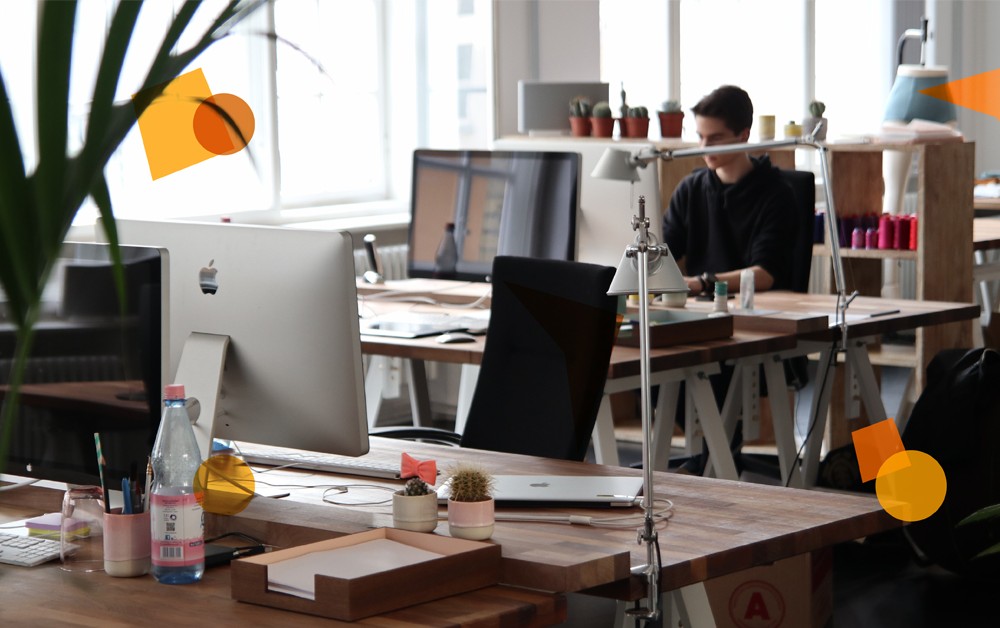
Our working lives have changed beyond recognition in the past 18 months, with offices being set up from kitchen tables, bedrooms and even gardens (when the sun allows!). But one thing remains the same: we spend almost a third of our lives working. So, as many of us prepare to head back to the office, it’s more important than ever that our working environment also works for us.
The right office can boost focus and productivity, with studies showing the most significant factor in determining an employee’s ability to work most effectively is their physical environment. In fact, according to a study by Wellness Together, research suggests a strong link between employees feeling catered and cared for by their workplace and employers respectively, and an increase in profitability, productivity and innovation.
Of course, office design and its impact on worker productivity isn’t a new concept, and we’ve seen many transitions over the years, from the death of cubicle working in the 90s in favour of open–plan concepts to the rise of “office fun” in the 2010s which saw ping pong and pool tables replace the watercooler as the traditional office congregation spot. Today, however, working models are becoming more agile, and with employees being given the option to operate from both home and the office it’s more important than ever to provide workers with an environment that encourages them to grow and prosper.
For many of us, one of the unexpected upsides resulting from the Covid-19 pandemic was the opportunity to spend more time in nature. During this time, we’ve witnessed a rise in the trend of bringing the outdoors in, and for a good reason too: the addition of plants to our working environments has proven beneficial in purifying air, promoting feelings of calm, and even boosting our general sense of wellbeing. Natural light, desk plants and in some cases, living walls already feature in many of our workplaces, and with studies repeatedly demonstrating that access to nature is vital for our psychological and physiological functioning. We’re likely to see workspaces continuing to provide creative solutions to ensure employees reap the benefits.
Remote working has removed the expectation of face-to-face meetings being the norm, and frictions associated with having participants join remotely can be alleviated by clever design of the work environment. We can, for example, expect to see dedicated spaces for video calling as a permanent fixture, as well as an influx of emerging sound-proofing technologies. Furthermore, the move towards hybrid working also seems to have prompted employers to reconsider how space is used more generally: studies show differentiation of space boosts productivity, suggesting that physically putting yourself in a new space can, quite literally, shift your brain and help you stay focused. Having spent over a year starved of in-person contact with our colleagues, the appetite for connection means that breakout rooms with areas for collaborative work and brainstorming are to become a must-have for businesses. Conversely, it seems that the need for comfort post-lockdown also remains, as evidence suggests that employee desire for personal, comfortable space is high. In this vein, we may see a tendency for employers to respond by opting for textured furnishings with homely touches in order to promote a comfortable and calm environment. Mixtures of areas designed to foster a sense of ‘community’, and personal spaces dedicated to uninterrupted work or meditation time are therefore encouraged.
With this in mind, the move back to in-house working can be seen as an opportunity for employers to bolster employee engagement. Our visual experience can be important to us at work, and employers may choose to emphasise their internal branding on-site in order to refocus and energize teams, as well as to promote a strong and established identity. Nowhere is this more apparent than in the use of colour for many businesses, where breaking up the wash of corporate white walls with a splash of the company colour scheme is thought to elicit cooperation and inspiration. In the same way, layers of lighting provide not only pops of colour, but can alter the overall ambience of a workplace depending on the desired effect.
We, therefore, find ourselves at a unique juncture in the future of office working, where the possibilities are seemingly endless. One overwhelmingly positive takeaway is that employers, on the whole, have responded well to the desire for flexible working, and it will be interesting to see over the coming months how businesses continue to adapt. By constructing practical solutions to promote agility and flexible working practices, employers empower their staff to foster inspiration and creativity, which in turn may prove for greater productivity, innovation, and profitability over time.